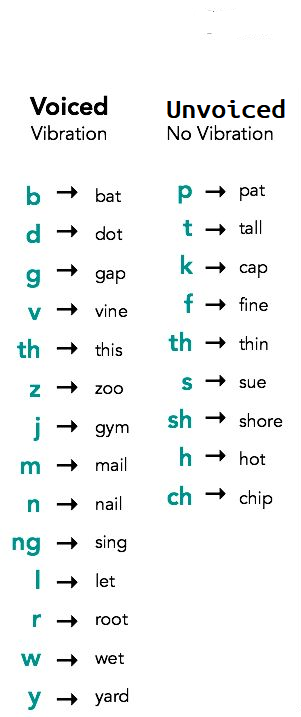How to tell the difference between a voiced sound and an unvoiced sound.
Try this little experiment.
Gently put your hands on your throat and say the word buzz. You should feel the word.
You should feel a vibration on the zzz sound.
This is a voiced sound.
Now, say the word bus.
You shouldn’t feel a vibration on the sss sound, because the sound is unvoiced.

Pronunciation: ‘ed’ endings
In the past simple tense, regular verbs end in ‘ed’. There are three different ways of pronouncing these two little letters – / ɪd /, / d / and / t /.
First, let’s look at the / ɪd / ending.
Regular verbs that end in the sound / t / or / d /, in the past simple the ‘ed’ ending is pronounced / ɪd /. Here are some examples:
Examples:
start – started
invite – invited
want –wanted
need – needed
decide – decided
Secondly, the pronunciation of the ‘ed’ ending for other regular verbs in the past simple depends on whether the last sound of the infinitive of the verb is voiced or not. Regular verbs that end in voiced sounds will have / d / as the pronunciation of the ‘ed’ ending in the past simple. Here are some examples.
Examples:
smile – smiled / turn – turned / love – loved / seem – seemed
And finally, regular verbs that end in unvoiced sounds will have / t / as the pronunciation of the ‘ed’ ending in the past simple. Here are some examples.
Examples:
jump – jumped
kiss – kissed
wash – washed
look – looked
watch – watched
To summarise, there are three different ways to pronounce the letters ‘-ed’ for regular verbs in the past simple and the way to choose how to pronounce them, depends on the final sound of the infinitive.

No responses yet